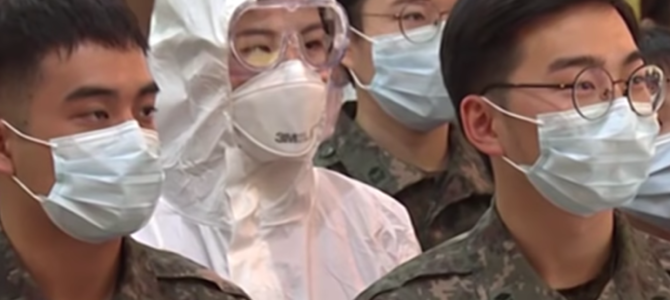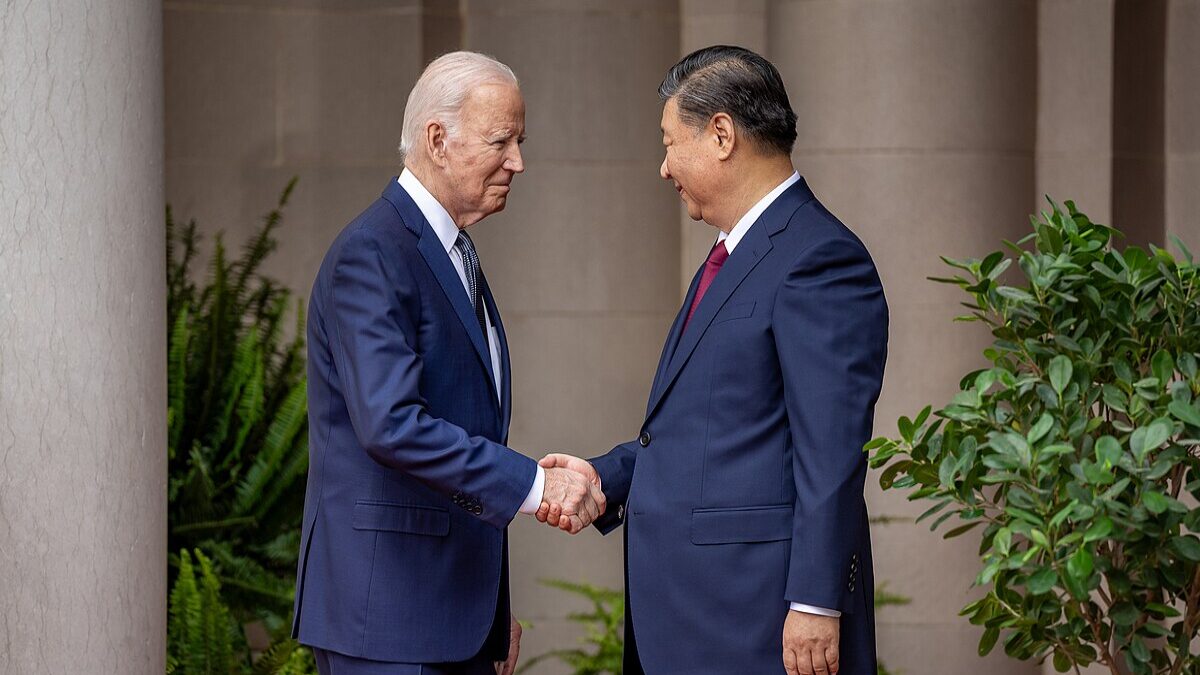
The recent coronavirus outbreak, which sprouted within China in December, has now stagnated the world’s second-largest economy for more than a month. Since then, the virus has spread to more than 50 countries across six continents, all except Antarctica. The World Health Organization declared the virus a “global threat” and urged countries to prepare.
The medical journal JAMA published a paper last week, titled “Characteristics of and Important Lessons From the Coronavirus Disease 2019 (COVID-19) Outbreak in China.” Its data was based on the 72,314 cases reported by Chinese Center for Disease Control and Prevention. Since China has the largest number of infected patients and death, this paper provides some valuable insights and lessons.
Coronavirus Lessons to Learn from China
Lesson one: Age makes a big difference. One of the most pertinent takeaways from the JAMA paper is that the age of the infected patient matters a great deal in correlation to coronavirus survival. While the overall coronavirus fatality rate sits at 2.3 percent (when the paper was written, there were 1,023 deaths among 44, 672 confirmed cases), there are no recorded deaths or serious health determinants among infected children 9 years old or younger (this age group represents 1 percent, or 416 reported cases among this cohort).
However, the fatality rate of those aged 70 to 79 was 8 percent, and in those aged 80 and older, 14.8 percent. Since seniors are the most vulnerable, they should exert extra precautions. If you’re a senior or you notice any senior in your home or neighborhood exhibit symptoms such as coughing, shortness of breath, or fever, the best bet is testing for the coronavirus as soon as possible.
Lesson two: Those with pre-existing health conditions are more vulnerable to infection. The same paper demonstrates that among all infected with coronavirus, the fatality rate among those who have other health issues is much higher: “10.5% for cardiovascular disease, 7.3% for diabetes, 6.3% for chronic respiratory disease, 6.0% for hypertension, and 5.6% for cancer.” People with chronic conditions who begin displaying flu-like symptoms should get tested for the coronavirus.
Lesson three: Stay calm; coronavirus infection does not equal a death sentence. More than 80 percent of confirmed cases were classified as mild (i.e., non-pneumonia to mild pneumonia), and are not life-threatening. The fatality rate among mild and severe cases has remained zero, while the fatality rate among critical cases was 49 percent. Patients who experienced mild symptoms are likely to recover after timely treatment.
Lesson four: Health care workers deserve extra protection. According to the JAMA paper, among the 44 ,672 confirmed cases, close to 4 percent, or a total of 1,716 infected people, were health workers. Specifically, 1,080, or 63 percent, were health-care workers in Wuhan. Overall, “14.8% of confirmed cases among health workers were classified as severe or critical and 5 deaths were observed” (the number of deaths among health care workers is likely understated).
Health-care workers not only are vulnerable to infection when unknowingly treating infected patients who are not exhibiting symptoms, but also can unknowingly transmit the virus to other patients. Health-care workers must have access to all the protective gear, masks, and testing kits they need.
Lesson five: Good personal hygiene habits and self-quarantine can be helpful in minimizing the spread of the virus. The coronavirus has been proven to be highly contagious, especially when in close contact. About 20 provinces outside Hubei, the epicenter of the coronavirus, “have reported 1,183 case clusters, 88% of which contained 2 to 4 confirmed cases.” Furthermore, “64% of clusters documented thus far have been within familial households.”
To help prevent the spread of the virus, please follow the Centers for Disease Control’s (CDC’s) recommended preventive actions, including:
- Wash your hands often with soap and water for at least 20 seconds, especially after going to the bathroom, before eating, and after blowing your nose, coughing, or sneezing.
- Stay home when you are sick.
- Cover your cough or sneeze with a tissue, then throw the tissue in the trash.
Besides the five lessons the JAMA paper identified empirically, here are three more.
More Coronavirus Lessons
Lesson six: You don’t need to wear a mask if you’re healthy. Many videos and reports are circulating about overzealous local Chinese authorities enforcing a mask rule by “tying up citizens who go out in public without a mask, parading them through the streets and forcing them to hold up signs apologizing for their mistakes.” Other than projecting state control and power, this kind of totalitarian rule does little to prevent the spread of the coronavirus.
The CDC guideline specifically says that if you are healthy, wearing a mask isn’t necessary and probably won’t protect you. Instead, “face masks should be used by people who show symptoms of COVID-19 to help prevent the spread of the disease to others.” Also, the use of masks “is crucial for health workers and people who are taking care of someone in close settings (at home or in a healthcare facility).”
So don’t become a mask hoarder. Let people who really need masks, such as medical professionals, have them. The U.S. surgeon general tweeted a similar warning .
Lesson seven: Being cured doesn’t necessarily mean you’re coronavirus-free. Chinese media Caixin reported last week about 14 percent of patients who recovered from the coronavirus and were discharged from hospitals in China’s Guangdong tested positive again in checkups. There is no good explanation for why this happened, but it is worrisome for two reasons.
First, it means the novel viral strand is seemingly non-adaptive to the immune system — some of those cured once could easily become sick again. Second, even if those who were cured don’t get sick again, it’s possible they could pass the virus on to others. So far, it is too early to tell. Still, the fact that so many cured patients tested positive again only makes containing the virus more difficult.
Lesson eight: Free speech and free press are the best disinfectants to the coronavirus. As of Feb. 28, 2020, the number of confirmed cases was 85,162 — 93 percent of which were in China. China also leads the rest of the world in terms of total deaths, 2,835, equivalent to a fatality rate of 3.5 percent. Many suspect actual numbers of both infected and dead are much higher than the Chinese Communist Party is admitting.
As a famous Chinese artist and political dissent Ai Weiwei explicates, “In a society where there is no freedom of the press, it is difficult for victims to be noticed.” Coronavirus victims are more than numbers and statistics. Behind each number is a broken family and many broken hearts.
Had the Chinese government not suppressed early whistleblowers such as Dr. Li Wenliang, not restricted freedom of expression in the name of “stability,” and allowed the press the freedom to investigate, report, and ask the tough questions when the coronavirus first emerged, Chinese people could have taken self-protective measures and saved many lives.
An Important Lesson About Freedom
As the coronavirus spread to more countries, data shows that people in authoritarian regimes suffer much worse consequences than people living in functioning democracies where free speech is protected and a free press thrives. Besides communist China, Iran has the fifth-highest number of confirmed cases, 388 and 34 deaths, a staggering fatality rate of 8.8 percent. In contrast, South Korea, a functioning democracy, has the second-highest number of confirmed cases, 2,931, with 16 deaths, a fatality rate of only 0.7 percent.
The Oslo Freedom Forum, an annual global conferences run by the New York-based nonprofit Human Rights Foundation, announced last week that it had to postpone its scheduled 2020 meeting due to concern over the emergent coronavirus. In a statement, the foundation elaborated, “[T]he current global health emergency is a powerful reminder of how authoritarian regimes, which rule almost half of the world’s countries, pose a serious threat to global peace and prosperity.”
China’s Wenliang left us these words of wisdom: “A healthy society should have more than one voice.” Freedom of expression and free press is essential to everyone’s health and safety. That’s the most valuable lesson we should take away from the coronavirus epidemic.









